You may be eating the healthiest superfoods, working out regularly, curbing your cravings, and saving money in the process. Heck, you’ve probably mastered almost every delightful kale recipe known to man!
But what if I told you that you may not be as healthy as you think you are?
I’m not trying to scare you, but the truth is: how we cook our delicious superfoods actually affects how healthy they are for us. I consider this part Phase 2 of good nutrition.
The first step, Phase 1, is getting yourself in a healthy foods mindset (which means kicking junk food’s butt to the curb). Just reading this blog helps you ace this phase, so congratulations. But Phase 2 is a bit more complicated.
Don’t worry; I know you can handle it.
I know you want to get all the vitamins, nutrients, and minerals you came to the table for. I mean, there’s certain foods we only eat because they’re so good for us, so we better make sure we’re getting the most out of them (I’m looking at you kombucha!).
So today I’ll be sharing my tips about how to maximize the nutritional value of your food, some of them may even surprise you.
Step 1: Buying Your Food
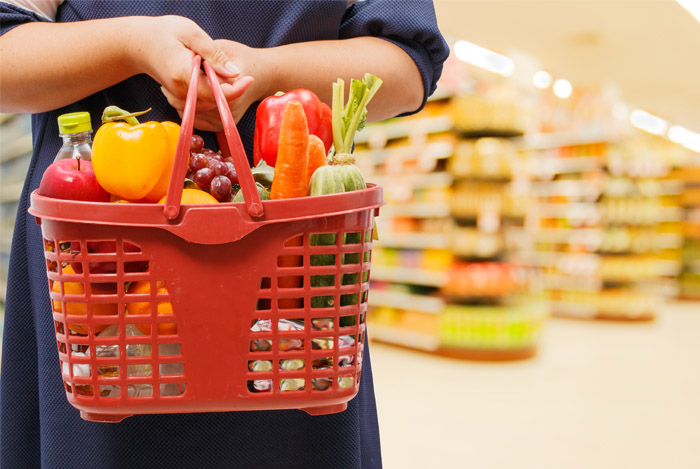 If you really want to talk about an ideal nutritional world, well, we’d all be living on farms where we could grow our own produce and raise our own livestock. This would be the only way to ensure that we knew exactly how healthy our food was.
If you really want to talk about an ideal nutritional world, well, we’d all be living on farms where we could grow our own produce and raise our own livestock. This would be the only way to ensure that we knew exactly how healthy our food was.
Unfortunately (or fortunately if you grew up on a farm), we have modern conveniences such as grocery stores and farmers’ markets where we can purchase the results of someone else’s hard work.
So here’s the first trick.
Always try to buy fresh, local, organic food
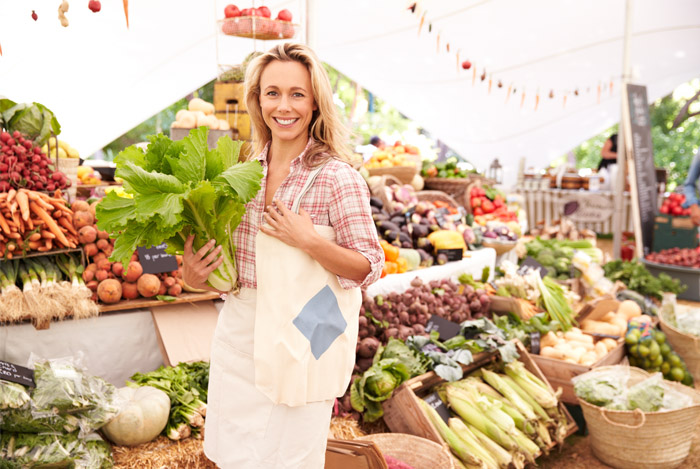 According to the currently popular farm-to-table trend, ideally, all of your food should come from within a 300 to 500 mile radius of your home.
According to the currently popular farm-to-table trend, ideally, all of your food should come from within a 300 to 500 mile radius of your home.
The shorter the distance your food has to travel, the better. Just like flowers and plants, our fruits and veggies start to degrade the moment they’re picked.
We never know how long the produce we buy at the store has been sitting around for, so try to buy your produce as fresh as possible. This means opting out of those once-a-week food trips and choosing to buy and eat your food within one or two days – when it’s super fresh.
Organic produce and meat raised without the use of antibiotics and hormones should always be favored, but if you don’t have that option, make sure to wash your produce VERY well.
It should also go without saying, but…
Stick to unprocessed, whole foods
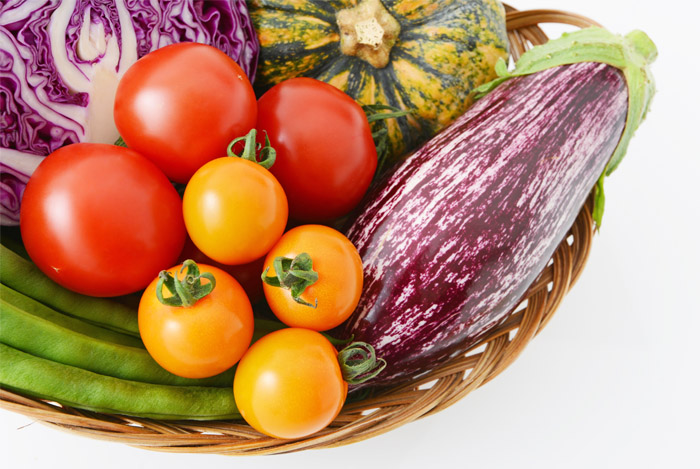 The maximum amount of nutrition will occur when your food is as close to its natural state as possible, not Frankenstein-ed into other chemically created products.
The maximum amount of nutrition will occur when your food is as close to its natural state as possible, not Frankenstein-ed into other chemically created products.
Stay away from artificial sweeteners, chemicals, and preservatives.
An easy way to avoid questionable ingredients ruining seemingly healthy foods is by shopping the perimeter at the grocery store. The perimeter is where the fresh produce, seafood, meat, and dairy will be. Keep away from the center aisles with all the horrible prepackaged, processed foods.
For example, fresh herbs have way more nutrition and flavor than dried ones. Instead of adding them early on to your recipes like you would with dried herbs and spices, add fresh ones during the last 5–10 minutes of cooking to keep their nutritional value intact.
You’ll love the flavor and will probably use less salt and sugar-laced condiments as crutches in your recipes.
What About Frozen Food?
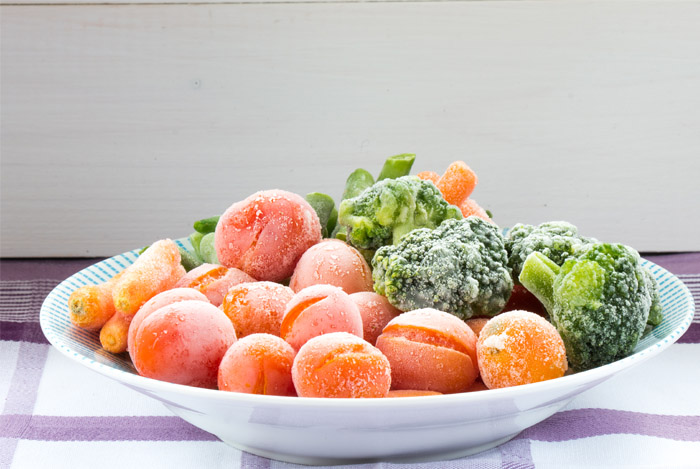 I know the allure of the frozen foods section all too well; here’s where you’ll find quick alternatives to tide you over all week instead of running to the market every day. But be mindful about your purchases and stick to foods that can be cooked or used straight from their frozen state.
I know the allure of the frozen foods section all too well; here’s where you’ll find quick alternatives to tide you over all week instead of running to the market every day. But be mindful about your purchases and stick to foods that can be cooked or used straight from their frozen state.
Some health advocates say you can “lose up to 50% of the vitamin C content during the thawing process.”
However, I think that frozen foods packed at the peak of their freshness and cooked straight from frozen are actually pretty decent alternatives to canned options.
“Most canned produce doesn’t stack up against fresh or frozen, since much of its vitamin content is destroyed by high processing temperatures or lost in the water in the can.”
Canned peas and carrots are especially vulnerable; they “lose 85 percent to 95 percent of their vitamin C” after you cook them. Sticking to fresh or frozen veggies you don’t have to thaw is the best bet for busy achievers.
I always have a big bag of frozen blueberries on hand to throw into my smoothies – no thawing required. Just make sure to use your frozen fruit instead of letting it disappear into the abyss known as the back of your freezer.
“Studies show that after six months, frozen cherries…lost as much as 50 percent of anthocyanins, the healthful compounds found in the pigment of red and blue fruits and vegetables.”
Which leads to my next point.
Step 2: Storing Your Food
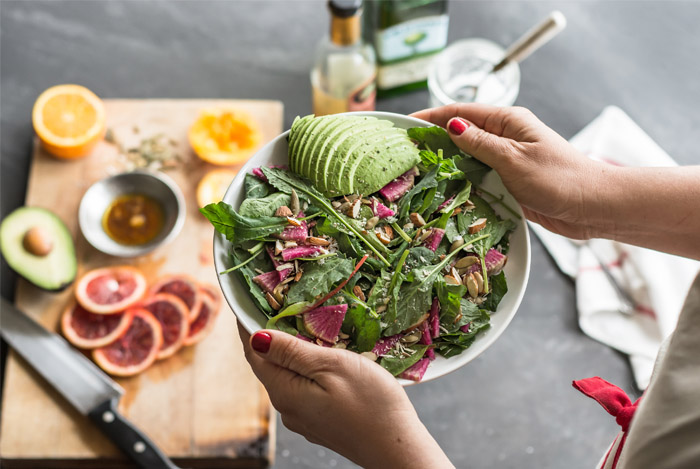 When you buy your food fresh you shouldn’t have to store it too long. The longer our food stays uneaten, the more it gets exposed to nutrient-destroying foes. This is why you should never pre-cut your fruits and veggies in advance.
When you buy your food fresh you shouldn’t have to store it too long. The longer our food stays uneaten, the more it gets exposed to nutrient-destroying foes. This is why you should never pre-cut your fruits and veggies in advance.
For example, finely dicing a veggie, leaves the flesh open and exposed to light and air. When these penetrate the flesh they will start to compromise your food’s benefits. You’ll also want to avoid those cute containers of pre-cut fruits and veggies too.
This is why I tend to stay away from salad bars; unless the veggies are unsliced (which is incredibly rare), who knows how long they’ve been sitting out there exposed to the air (and other people)?
If you’re making a salad with chopped veggies, add the dressing to the salad bowl first and then add your chopped veggies to the salad. The dressing will coat the veggies and create a thin barrier against the elements.
As for leftovers, only give yourself a maximum of 2-3 days to eat them. “After 24 hours in the fridge, [cooked] vegetables lose one-fourth of their vitamin C; after two days, nearly half.”
Plus, leaving them in the fridge any longer drains most of their nutrition and leaves you susceptible to bacteria and mold. I know you don’t want that.
Step 3: Cooking Your Food
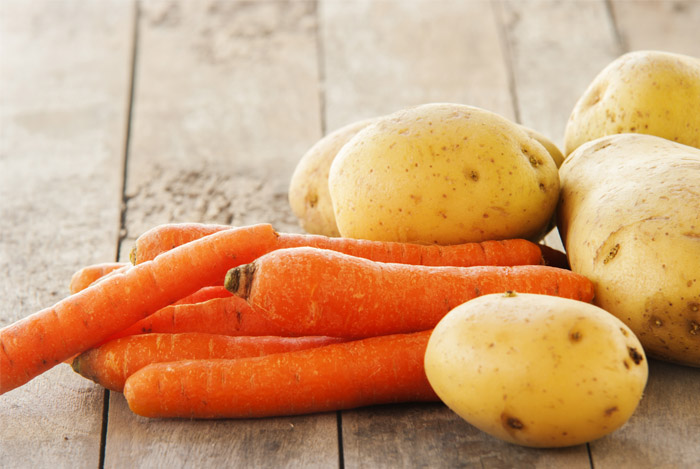
Before you start prepping, never discard a fruit or veggie skin! You should always cook with the skin on and eat it for extra nutrients and fiber.
Kiwi, banana, and sweet potato can all be enjoyed with their skin on, which is usually where most of their healthy attributes hide.
For example, “root vegetables (carrots, potatoes, sweet potatoes) [cooked] whole, in their skins, retain about 65 percent of their vitamin C.”
Just make sure to wash them super well to remove bacteria, dirt, and even insects.
Speaking of cooking…raw foodies believe that cooking destroys all the original vitamins, minerals, and essential enzymes found in our food. While that’s true to an extent, it’s not entirely accurate.
This chart explains the typical maximum nutrient losses foods face when they’re cooked, frozen, or reheated.
As you can see, sensitive nutrients have the potential to get totally destroyed by the wrong cooking methods. On the other hand, some foods actually release more nutrients when they’re cooked.
When discussing “carrots, spinach, and tomatoes, for example, heat facilitates the release of antioxidants by breaking down cell walls, providing an easier passage of the healthy components from food to body.”
This is why I think this phase of nutrition is so complicated. How do you know what to cook and what to eat raw?
Kryptonite for Nutrients
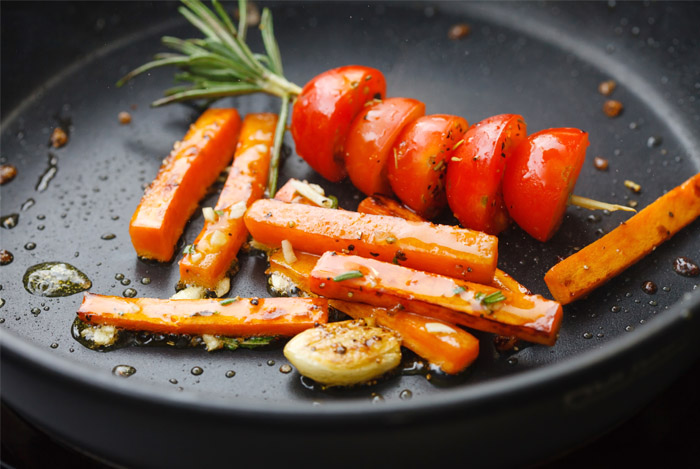
Even though vitamins and nutrients give us a plethora of healthy benefits, they’re fragile and sensitive little dudes when faced with the possibility of being destroyed.
So think about what you’re enjoying your food for. Maybe you’re feeling under the weather and start loading up on vitamin C and zinc. Make sure you know what works for those specific vitamins and minerals to help determine the right cooking method.
According to this chart, we can see what specific elements take nutrients out of our food. Water soluble vitamins and nutrients start leaching out their goodies when cooked in water so you’ll lose those benefits.
Similarly, produce left out in open air also starts losing nutrients like we discussed earlier.
On the other hand, “fat-soluble vitamins will not be lost when the foods that contain them are cooked.”
Instead, your body’s absorption of these vitamins actually benefits from some light cooking in my favorite healthy oils:
- Vitamin A
- Vitamin D
- Vitamin E
- Vitamin K
However, this doesn’t mean you should cook your food to its second death; veggies should never be soggy or waterlogged and meat shouldn’t be burnt to a carcinogen-laden, nutrient killing crisp.
So how do you balance the cooking scales?
Cook Your Food Minimally, Quickly, and with as Little Water Possible
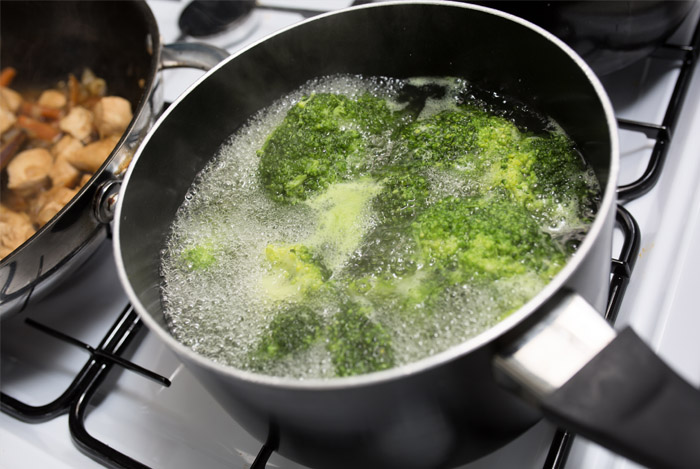 Let’s break this rule down.
Let’s break this rule down.
Try to use the least amount of water you can; when veggies are boiled, an average of 60–70% of the vitamins and minerals leach out into the water, especially water-soluble vitamin C and B vitamins.
This is a total waste unless you’re making soup, in which case you’ll just be drinking those vitamins instead. So if you have to boil your veggies, save the water you boiled your food in for stews or recipes that call for stock.
Cooking food minimally and quickly means you don’t subject your food to long cook sessions in a fiery inferno of heat, which destroys all the nutrients in your foods.
It probably goes without saying, but frying anything in hot oil is pretty much out of the question if your goal is nutritional value. Roasting, baking, and grilling aren’t as bad as frying, but they’re not as good as the other methods on today’s agenda.
Why’s that?
Those cooking options all force you to use constant high heat for a prolonged period of time. Research suggests that regularly consuming charred, well-done meat may increase the risk of pancreatic cancer and breast cancer.
When you cook at high heat, a chemical reaction occurs between the fat and protein in the meat. This creates toxins that have been linked to inflammation, an imbalance of antioxidants in the body, and an increased risk of diabetes and cardiovascular disease.
So what should you be doing instead?
Steaming
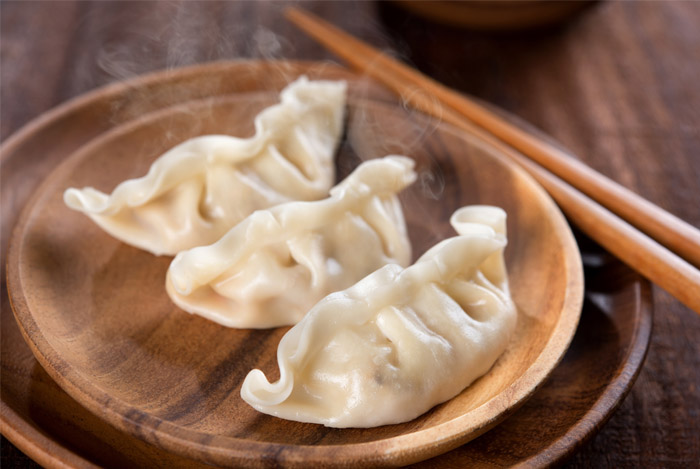 I’m a big fan of steaming veggies and foods such as homemade veggie dumplings.
I’m a big fan of steaming veggies and foods such as homemade veggie dumplings.
Steaming foods uses a small amount of water and keeps the food separate from the water to avoid leaching.
Here are some pro steamer tips I use:
- Don’t use too much water in the pan under the steamer. I’d say depending on the size of your steamer, anything under half a cup of water is perfect. I like to add spices and a squeeze of lemon to the water to add a bit of flavor.
- Make sure your water is boiling before adding the veggies to the steamer basket; you don’t want them to cook any more than they have to.
- Add your veggies once you see steam; most need anywhere from just 5–7 minutes. Avoid overcooking to keep your nutrients intact.
Pressure Cooking
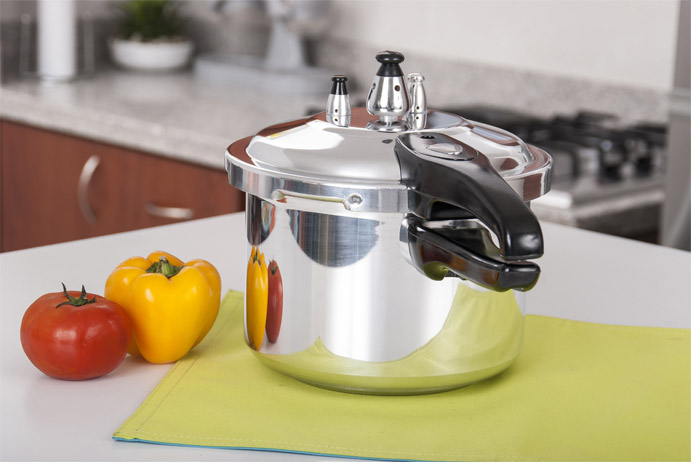 This option may seem a little scary at first, after all, you’re using a highly pressurized pot to cook over heat, but it’s one of the best (and fastest!) ways to cook your veggies.
This option may seem a little scary at first, after all, you’re using a highly pressurized pot to cook over heat, but it’s one of the best (and fastest!) ways to cook your veggies.
Here’s how it works: you add a bit of water to the pot along with your veggies. The pressure cooker forms a tight seal and builds pressure to make the water turn into steam. Cook for a few minutes and your veggies are cooked, yet still colorful and packed with nutrients.
Microwaving
 Despite the claims that microwaves give you cancer, microwaves are one of the healthiest ways to cook your food.
Despite the claims that microwaves give you cancer, microwaves are one of the healthiest ways to cook your food.
Microwaves cook your food from the inside out by revving up the molecules in your food so it heats up and cooks for a very short amount of time. The shorter the amount of time your food is exposed to heat, the least nutrient degradation you’ll see.
Microwaving is the technological upgrade to steaming; you drop a few tablespoons of water in a bowl, add your veggies, and watch the steam cook your veggies through for a very short time.
“Steaming and boiling [broccoli] caused a 22 percent to 34 percent loss of vitamin C. Microwaved and pressure-cooked [broccoli] retained 90 percent of their vitamin C.”
Plus, microwaving eliminates the need to cook your veggies in additional oils.
FYI: always microwave your food in a microwave safe container!
Blanching
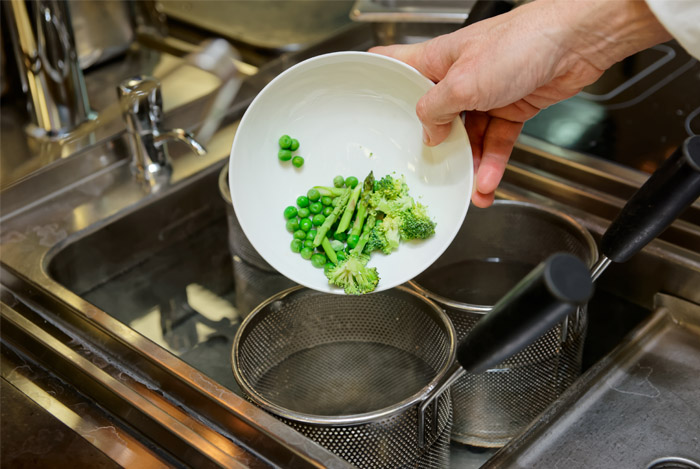 If you’re going to cook produce in a hot bath of water, don’t let your room temp or cold foods heat up with the water before it boils.
If you’re going to cook produce in a hot bath of water, don’t let your room temp or cold foods heat up with the water before it boils.
Wait for the water to heat up, throw your produce in for a few minutes, then take them out and plunge them into an ice bath to stop the cooking.
A bright side (literally): your veggies will be restaurant-worthy colorful and shiny and you’ll never have to look at a brown asparagus or broccoli ever again.
Combining Nutrients for Maximum Absorption
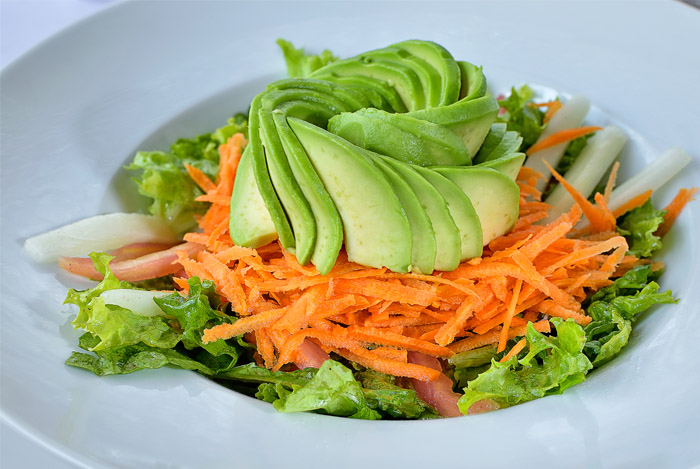 Even if you cook your foods the right way to maintain their nutrient profiles, you may be doing it all for nothing if you’re not combining the right vitamins and minerals for maximum absorption.
Even if you cook your foods the right way to maintain their nutrient profiles, you may be doing it all for nothing if you’re not combining the right vitamins and minerals for maximum absorption.
“Your digestive system must first extract those nutrients from the food you eat…and absorb them into your bloodstream. From there, your cells absorb the particular vitamins and other nutrients they require.”
Case in point: vitamin C helps the absorption of iron and chromium.
But if you don’t have enough copper in your system, the iron won’t be able to travel in your body and you may become iron deficient despite eating lots of vitamin c and iron-rich foods together.
Calcium also competes with iron for absorption so you may want to reconsider that creamed spinach dish around the holidays.
Additionally, high doses of vitamin A may interfere and stop the absorption of vitamin K.
If your vitamin D levels are low, chances are you’ll have a really hard time absorbing calcium and magnesium. So make sure to spend a few minutes in the sun every day.
Pairing “good fats” with certain vegetables helps your body absorb more phytochemicals from your fruits and veggies.
A recent study measured just how well phytochemicals were absorbed from a lettuce, carrot, and spinach salad with or without 2 1/2 tablespoons of avocado.
According to the research, those who enjoyed the avocado with their veggie salad “absorbed 8.3 times more alpha-carotene…13.6 times more beta-carotene…and 4.3 times more lutein than those who did not eat avocados.”
Moral of the story: try to eat a well-balanced diet inclusive of a variety of vitamins, minerals, and nutrients to make sure you always have a steady supply of absorption helpers on hand.
We learned a lot of information today, but it’s nothing you can’t handle.
As you can see, there’s a lot more that goes into the nutritional value of your food. But the good news is that it’s entirely controllable.
By choosing certain cooking methods over others, and combining the right nutrients, you’ll be truly confident that you’re getting as many health benefits from your food as it will give you. Doesn’t that make eating all those veggies worth it now?
What was the most surprising tip you learned today? Are you going to re-work any of your favorite recipes? Share your thoughts with me in the comments; I’d love to hear how you’re going to maximize your nutrition!
The post How to Maximize the Nutritional Value of your Food appeared first on Nutrition Secrets.
http://www.nutritionsecrets.com/maximize-nutritional-value/
No comments:
Post a Comment